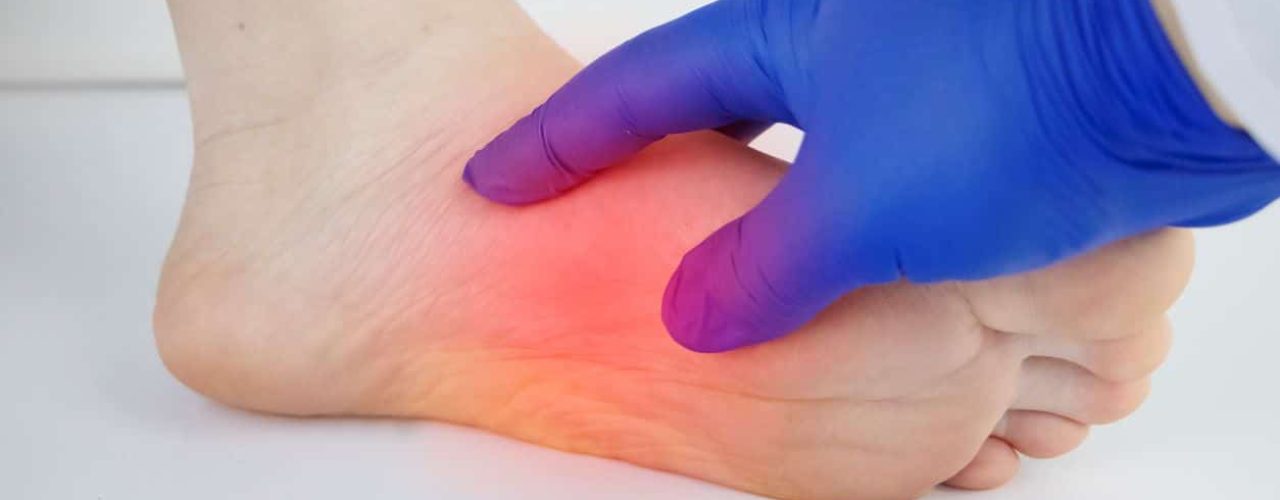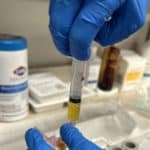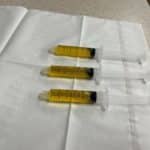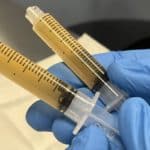It is the time to say goodbye to plantar fasciitis – induced dull, sharp or burning sensations that disrupt your daily activities! Discover the revolutionary solution that will transform your daily life – platelet-rich plasma (PRP) injections!
This advanced regenerative medicine tackles inflammation and degeneration in your plantar fascia, guaranteeing long-lasting relief and restoring your foot’s plantar fascia to optimal function. Get ready to regain your active lifestyle, whether it’s running, hiking or simply enjoying a walk in the park!
This article explores plantar fasciitis symptoms, limitations of conventional treatments and the potential of platelet-rich plasma (PRP) for plantar fasciitis, revolutionizing its management and improving quality of life.
Understanding Plantar Fasciitis
A. Definition and causes of plantar fasciitis
Plantar Fasciitis, a condition that causes heel pain, is most commonly experienced by middle-aged individuals, particularly professional athletes who participate in running sports. Plantar Fasciitis affects around 1 out of every 10 adults above 50 and Plantar Fasciitis is believed to account for approximately 8% of all running-related injuries.
The primary cause of plantar fasciitis is the repetitive small injuries that occur in the plantar fascia, a band of tissue connecting the heel bone to the toes. These injuries lead to inflammation and degeneration of plantar fascia.
B. Common symptoms and the impact on mobility of plantar fasciitis
People with this condition commonly experience the relentless pain of plantar fasciitis, targeting the heel or the middle area of the foot. This condition gradually develops, causing sharp or dull sensations. It can burn or ache, spreading from the bottom of the foot outward.
Sadly, plantar fasciitis lacks definitive treatment options and often occurs, becoming a lifelong physical disability. It leads to social isolation, limits daily activities, and negatively impacts overall health perception. Managing its symptoms poses a long-term burden, both financially and personally.
C. Conservative treatment options and their limitations
To address plantar fasciitis, conservative treatments commonly involve physical therapy, eccentric stretching exercise, nonsteroidal anti-inflammatory drugs (NSAIDs), and orthotic devices. In 2020, the American College of Foot and Ankle Surgeons recognized the effectiveness of corticosteroid injections and included them as a recommended treatment option for relieving heel pain associated with this condition after the failure of the conservative treatment.
Surgery
Foot and ankle surgery carries risks of long-term complications, including but not limited to lasting nerve damage, cartilage injury and infection, impacting patient well-being. Medicare costs of foot and ankle surgery reached $11 billion in 2021, showing a 38% increase over the previous decade.
NSAIDs
NSAIDs rapidly relieves pain, noticeable within 10 minutes and peaking around 45 minutes after taking them. However, despite their widespread use, NSAIDs have known adverse effects, including slowing fracture healing, gastrointestinal bleeding and cardiovascular toxicity.
Corticosteroids
Currently, local steroid injections are recommended for plantar fasciitis patients who have not responded to the conservative treatment for at least six months. However, these cortisone injections have a high recurrence rate and tend to yield disappointing long-term results. It is important to note that corticosteroids can have systemic side effects when used excessively or inappropriately, including weight gain, insulin resistance and weakened immune system.
Introduction to PRP for Plantar Fasciitis
A. Explanation of platelet-rich plasma and its composition
Platelet-rich plasma injections are now recognized as a second-line treatment option for patients with ongoing heel pain from plantar fasciitis after three months of initial treatment.
PRP contains more than 15000 growth factors cytokines that play an important role in the growth and development of different types of cells, including blood vessels, immune and stem cells.
The effectiveness of PRP with activating agent is believed to stem from its ability to reduce inflammation, activate repair pathways, and accelerate the healing process through releasing growth factors.
By harnessing the power of these growth factors and platelets, RPR injections as regenerative medicine offers a promising approach to combat this condition, addressing both its inflammatory and degenerative aspects.
B. Advantages of platelet-rich plasma over other treatment options
Platelet-rich plasma (PRP) treatment offers multiple benefits for plantar fasciitis management.
Cost-effective, Simple and Safe
Platelet-rich plasma injections are cost-effective, straightforward to administer and minimally invasive in nature.
Preparing PRP treatment in the laboratory is a time-limiting process, typically taking approximately 35 to 40 minutes. The blood is drawn from the patient and centrifuged for a significant increase in the count of platelets, ranging from 104.7% to 196.82%. This platelet-rich plasma is then injected in pathological and surrounding tissue, releasing growth factors and platelets to provide relief and promote the healing of plantar fascia. Since platelet-rich plasma is derived from the patient’s own blood, there is no risk of immune rejection.
Effective
Moreover, in a randomized controlled study involving 64 plantar fasciitis treated with cortisone injections or platelet-rich plasma injections, both treatment groups showed overall clinical improvement.
However, patients that received local platelet-rich plasma injections experienced a remarkable reduction in pain. What’s even more intriguing is that platelet-rich plasma injections may offer a longer duration of action compared to local steroid injection.
Long-lasting
Additionally, another mid-term follow-up research shows evidence that plantar fasciitis treated with PRP injections outperformed with cortisone injections as well, in terms of relieving pain and improving foot and ankle function.
These exciting results suggest that safe PRP injections as the regenerative medicine hold great potential for delivering long-lasting pain relief and significant improvements in functional outcomes for individuals dealing with plantar fasciitis.
Summary of the effectiveness of platelet-rich plasma therapy for plantar fasciitis
Conservative treatments such as physical therapy and steroid injections for plantar fasciitis often fall short, with limited effectiveness, potential side effects and high recurrent rate. However, PRP therapy, a regenerative medicine, has changed everything. By harnessing the natural healing potential of your own blood, PRP injections reduces inflammation, stimulates tissue repair and facilitates wound healing for a pain-free future.
Consider PRP therapy if you are suffering from plantar fasciitis and are seeking a potential treatment. Affordable, simple, and non-invasive, it makes it an appealing option. Getting PRP therapy for plantar fasciitis helps you experience long-term pain relief as well as significant mobility improvements, making it easier for you to enjoy an active lifestyle with no limitations.
Unlock the door to a brighter future in foot pain management with PRP therapy. Ongoing research evidence and cutting-edge techniques are poised to elevate the effectiveness of PRP therapy to new heights and broaden its applications to Achilles tendon etc. Stay tuned for more thrilling advancements of PRP therapy that will pave the way for optimal foot health and a renewed sense of well-being.







